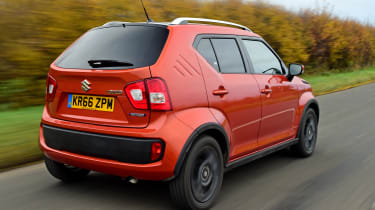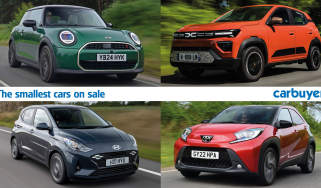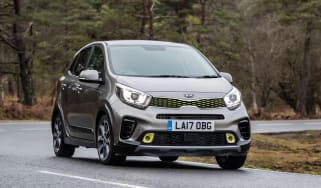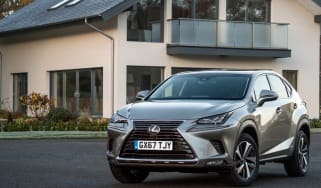Suzuki Ignis SUV
“The Suzuki Ignis is a small SUV that’s not much bigger than a city car. It has character in spades and should prove cheap to run, but it’s a flawed gem”
Pros
- Great to drive in town
- Practical for its size
- Low running costs
Cons
- Some safety kit is optional
- Leans a bit when cornering
- 4x4 model has a smaller boot
Small cars that are suited to city driving are something that Suzuki does very well. The Ignis follows in the tyre tracks of several successful small models in the Japanese manufacturer’s history but incorporates the current trend for SUV styling. The Ignis has a raised ride height, a tall body and the option of four-wheel drive as a result.
There’s plenty of space inside for passengers because of the boxy dimensions. The Ignis is a smaller and cheaper alternative to small SUVs like the Renault Captur and Ford Ecosport. It’s also one of the smallest four-wheel-drive cars on sale, but we recommend buying a Suzuki Jimny if you really need to go off-road often in a small SUV.
While the Ignis can only really be used for some light off-roading, it’s happier around town or out on country lanes than the Jimny. Cornering enthusiastically will cause noticeable body lean and the Ignis isn’t hugely comfortable as a motorway cruiser, but it’s a good choice for those who live in more rural areas, where the optional four-wheel drive will prove useful more often.
The Ignis isn't offered with a diesel engine, but there are two good petrols to choose from. Entry-level SZ3 cars get a 1.2-litre petrol engine with 89bhp, front-wheel drive, a manual gearbox and a 0-62mph time of 12.2 seconds. Average economy of 52.9mpg and a CO2 figure of 104g/km are claimed by Suzuki. Step up to the SZ-T and you get the same 89bhp, 1.2-litre Dualjet petrol engine, but with the option of an automatic gearbox.
The top-spec Ignis SZ5 offers the option of four-wheel drive, which can only be specified along with Suzuki’s 89bhp 1.2-litre Dualjet SHVS mild hybrid engine (and manual gearbox). This uses a battery pack and clever starter motor to improve efficiency compared to the non-electrified versions. It feels spritely, getting from 0-62mph in 11.5 seconds.
Adding four-wheel drive undoes much of the good work of the SHVS in terms of economy, although it shaves a small amount off the Ignis’ 0-62mph time. It’s still not an option we recommend unless you need it, as the extra 4x4 mechanicals add expense and shrink the 260-litre boot by about 20% to 204 litres – around 45 litres smaller than a Skoda Citigo.
The SZ5 trim level can also be had with front-wheel drive and the mild-hybrid engine – and this is the combination we recommend.
Another aspect of the Ignis that requires some explanation is its safety rating. Euro NCAP recently toughened up its test criteria and split its ratings into two: the first set of stars (out of five) applies to a car in its standard specification; the second assesses its crashworthiness when additional safety features are fitted. As the Ignis scored three stars in standard guise and the full five with the optional DCBS safety pack fitted, we can only advise you go for DCBS.















